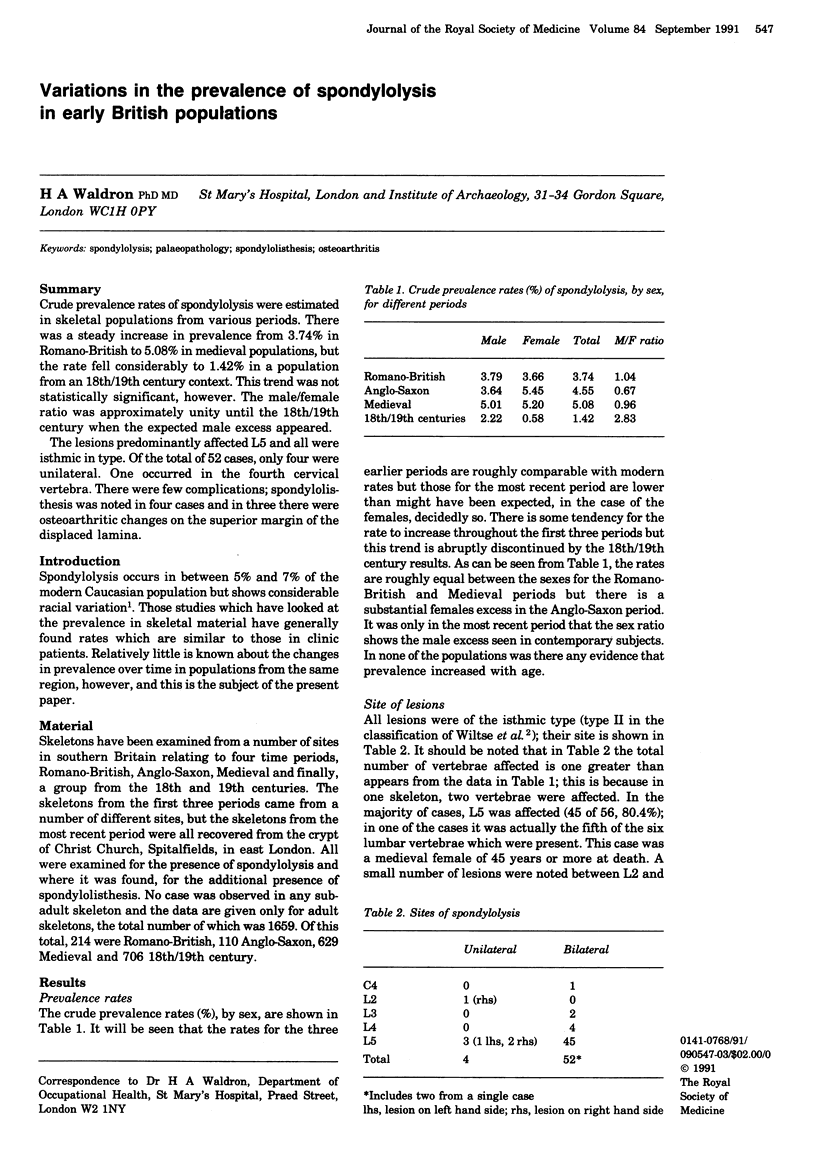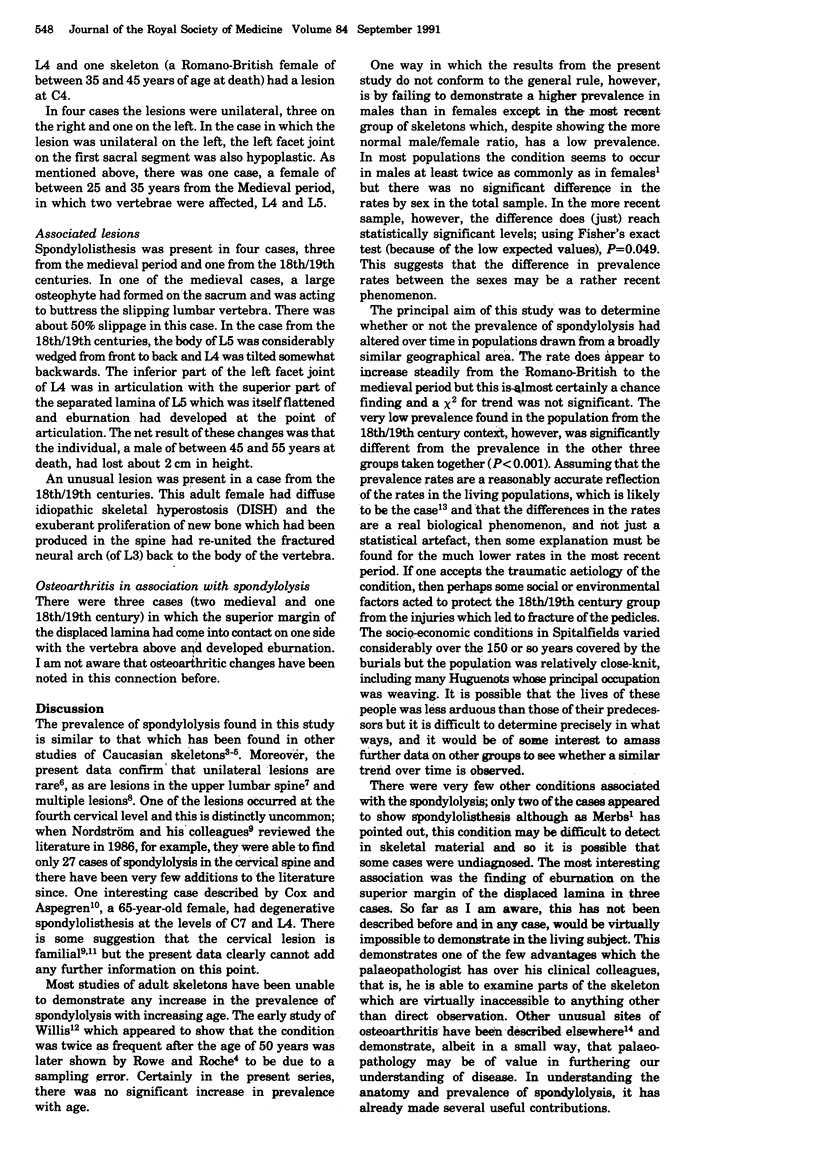Abstract
Crude prevalence rates of spondylolysis were estimated in skeletal populations from various periods. There was a steady increase in prevalence from 3.74% in Romano-British to 5.08% in medieval populations, but the rate fell considerably to 1.42% in a population from an 18th/19th century context. This trend was not statistically significant, however. The male/female ratio was approximately unity until the 18th/19th century when the expected male excess appeared. The lesions predominantly affected L5 and all were isthmic in type. Of the total of 52 cases, only four were unilateral. One occurred in the fourth cervical vertebra. There were few complications; spondylolisthesis was noted in four cases and in three there were osteoarthritic changes on the superior margin of the displaced lamina.
Full text
PDF


Selected References
These references are in PubMed. This may not be the complete list of references from this article.
- Cox J. M., Aspegren D. D. Degenerative spondylolisthesis of C7 and L4 in same patient. J Manipulative Physiol Ther. 1988 Jun;11(3):195–205. [PubMed] [Google Scholar]
- Currarino G. Primary spondylolysis of the axis vertebra (C2) in three children, including one with pyknodysostosis. Pediatr Radiol. 1989;19(8):535–538. doi: 10.1007/BF02389566. [DOI] [PubMed] [Google Scholar]
- Gunzburg R., Wagner J. Degenerative spondylolisthesis with unilateral spondylolysis. A case report. Int Orthop. 1988;12(2):139–141. doi: 10.1007/BF00266979. [DOI] [PubMed] [Google Scholar]
- Mathiesen F., Simper L. B., Seerup A. Multiple spondylolyses and spondylolistheses. Br J Radiol. 1984 Apr;57(676):338–340. doi: 10.1259/0007-1285-57-676-338. [DOI] [PubMed] [Google Scholar]
- NATHAN H. Spondylolysis; its anatomy and mechanism of development. J Bone Joint Surg Am. 1959 Mar;41-A(2):303–320. [PubMed] [Google Scholar]
- Nordström R. E., Lahdenranta T. V., Kaitila I. I., Laasonen E. M. Familial spondylolisthesis of the axis vertebra. J Bone Joint Surg Br. 1986 Nov;68(5):704–706. doi: 10.1302/0301-620X.68B5.3536939. [DOI] [PubMed] [Google Scholar]
- ROCHE M. B., ROWE G. G. The incidence of separate neural arch and coincident bone variations; a survey of 4,200 skeletons. Anat Rec. 1951 Feb;109(2):233–252. doi: 10.1002/ar.1091090207. [DOI] [PubMed] [Google Scholar]
- ROWE G. G., ROCHE M. B. The etiology of separate neural arch. J Bone Joint Surg Am. 1953 Jan;35-A(1):102–110. [PubMed] [Google Scholar]
- Ravichandran G. Upper lumbar spondylolysis. Int Orthop. 1981;5(1):31–35. doi: 10.1007/BF00286096. [DOI] [PubMed] [Google Scholar]
- Wiltse L. L., Newman P. H., Macnab I. Classification of spondylolisis and spondylolisthesis. Clin Orthop Relat Res. 1976 Jun;(117):23–29. [PubMed] [Google Scholar]


